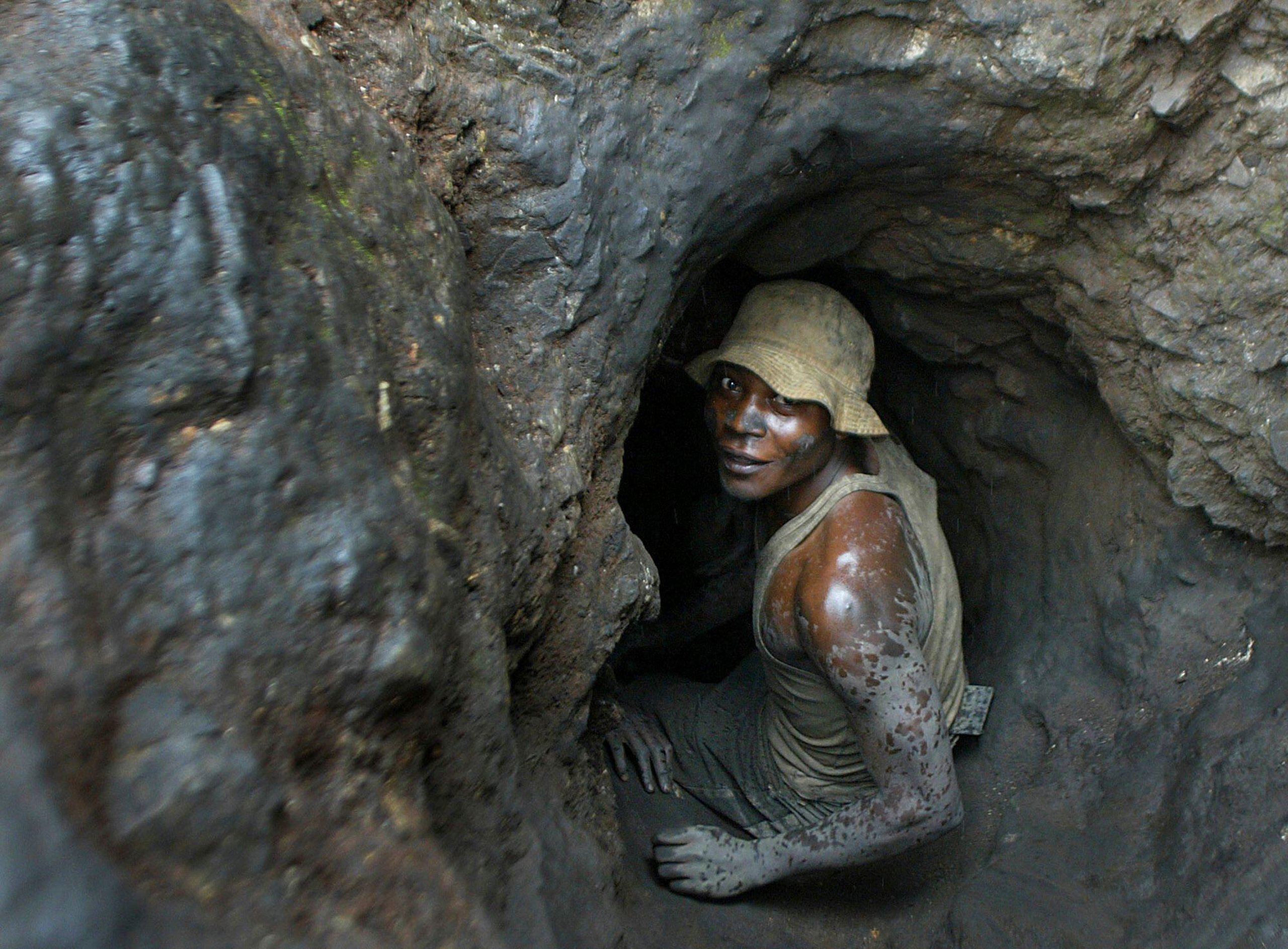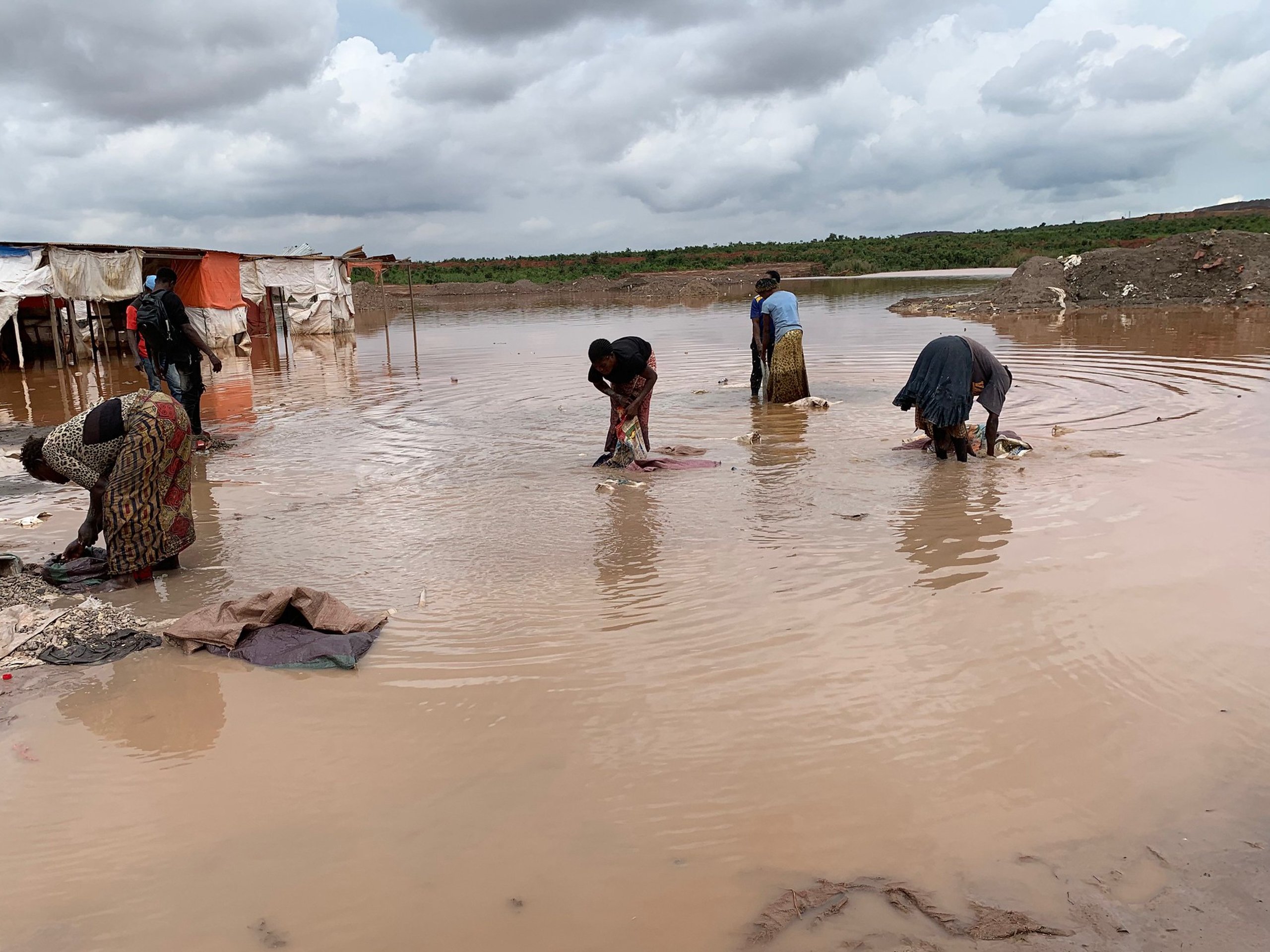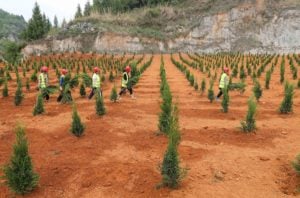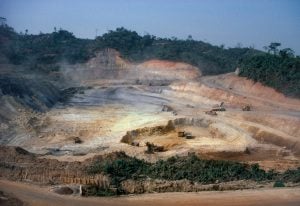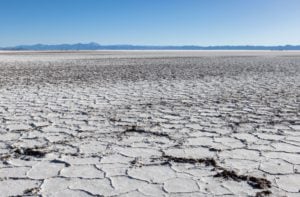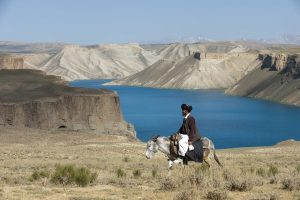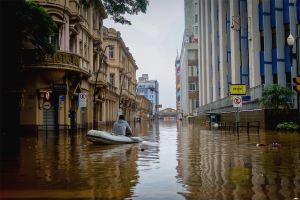Emmanuel Umpula Nkumba grew up near the mines in Katanga, the Democratic Republic of the Congo’s mineral-rich eastern province, in the early 2000s. He recalls that cobalt mining was not a popular job amongst locals, citing the “hard work” of extracting the scattered and deeply lodged minerals – challenging for artisanal (small-scale) miners using simple hand tools.
The ubiquity of cobalt mining in the Democratic Republic of the Congo (DRC) would explode later that decade, however. In 2002, the country legalised the privatisation of mines, which led to a boom in foreign investment. By the 2010s, industries in need of huge supplies of cobalt – electric vehicle (EV) production and battery storage – started gaining traction worldwide. At the start of the 2020s, prices for the commodity reached record highs, and were expected to continue rising.
As of December 2023, over 70% of the global cobalt supply comes from the DRC. Cobalt mining has been cited by the UN as a potential booster of economic growth and government revenue for the country. By positioning itself at the centre of the world’s transitioning economy, this industry is also a developer of new jobs domestically.
But just as the DRC had ramped up production, the price of cobalt dropped, losing 60% by 2023. The International Energy Agency (IEA) expects this downward trend to continue. So, what does this mean for the DRC’s cobalt-driven development ambitions, and the livelihoods of over 200,000 Congolese miners?
Oversupply and spiralling prices
Experts describe multiple reasons for cobalt’s loss in value, including inflation and the pandemic, which both stifled global demand. Dialogue Earth consulted Yun Young Kim, a world energy outlook analyst for the IEA. She describes 2023 as “a difficult year for commodities and macroeconomics,” because “consumers were spending less and electronics demand was lower.”
As 2022 ended, the global cobalt stockpile continued to increase. That year, four new cobalt mines began operations in Indonesia. The country’s rapid development of mines meant it experienced a 250% increase in cobalt production, making it the world’s second-largest producer in 2022.
In 2023, the already-significant global supply increased: the Chinese mining company CMOC Group, previously suspended from operating in the DRC over royalty disputes, restarted operations at the world’s biggest cobalt mine, Tenke Fungurume; its 2023 output represented nearly a quarter (over 55,000 tonnes) of global cobalt production that year.
Driven by a desire to diversify supply chains and reduce dependency on a handful of nations, some countries and companies rushed to commission their own cobalt mines. But global oversupply and the subsequent price crash has since been blamed for a number of endeavours shutting down before they even opened, such as the US’s sole cobalt mine in Idaho.
A race to the bottom?
An estimated 10-30% of the DRC’s cobalt is produced by nearly 200,000 artisanal miners, who work in dangerous conditions with no safety equipment nor any sort of social or institutional security net. Miners, including children, enter tunnels deeper than 50 metres to scour for scrap minerals. They face various occupational hazards, including tunnel collapses and exposure gas that builds up due to poor ventilation.
Women miners are frequently subjected to sexual exploitation and unfair wages. Due to their cultural exclusion from the industry, they often must work in “tolerance zones” – areas controlled by large, permit-holding companies where unlicensed, artisanal mining is also tolerated.
Cobalt’s current low-price environment is threatening to increase these risks, as companies scramble for ever-smaller profit margins. “If the price goes down, that effectively will exacerbate the negative impact on communities,” says Nkumba, executive director of the DRC-based NGO Africa Resources Watch (Afrewatch). In the absence of alternatives, locals who are involved in mining must continue even as wages inevitably shrink, Nkumba explains.
Lower prices also disincentivise responsible production, notes Eric Buisson, a critical minerals analyst at the IEA: “A lower-price environment creates less incentive for diversification, and that also [disincentivises] the responsible-production side.” Being environmentally and socially responsible costs, so companies might choose to cut corners.
Even if the price of a commodity increases, it may not mean better conditions for labourers, notes Kim: the high price of gems, like diamonds, or precious metals, like gold, has not always translated into good labour conditions. This is true of cobalt, too.
Towards a more equitable industry
Since 2016, Afrewatch and the UK-based International Institute for Environment and Development thinktank have been publishing reports on the DRC’s efforts to address human rights violations in mining zones. The government has been taking steps to combat child labour and improve working conditions, rolling out policies that formalise the artisanal mining sector and entrust mine safety oversight to state agencies. However, the organisations’ analysis notes persistent and deep-rooted systemic issues.
In particular, their latest report notes insufficient land designated as Special Artisanal Mining Zones (zones d’exploitation minière artisanale, or ZEAs) for the number of local miners. It describes “significant roadblocks” to establishing more designations, such as “a licensing system that privileges large-scale miners, leaving little space for ZEAs.” It also underscores “political and economic interests benefitting from informal taxes and fees collected in tolerance zones”.
These factors force miners to continue scavenging for cobalt in cramped pockets of ZEAs, or illegally – and dangerously – by digging deeper than permitted depths. Foreign mining companies subsequently scoop up most of the industry’s profit, leaving heavily dependent artisanal miners with little to live on.
Nkumba, who co-authored the report, says cobalt still has the potential to raise living standards for miners. Three things can make that happen: more community land must be allocated to artisanal miners; the cobalt price and market require better organisation and regulation; and the DRC’s economy needs to be diversified beyond cobalt.
Cobalt mining is not the problem, says Nkumba. Rather, it is factors within the country’s industry that perpetuate poverty amongst artisanal miners: low pay, disempowered women and a lack of political will to overhaul the system. “We need cobalt to be profitable for people … and should not consider it a curse for communities.”
